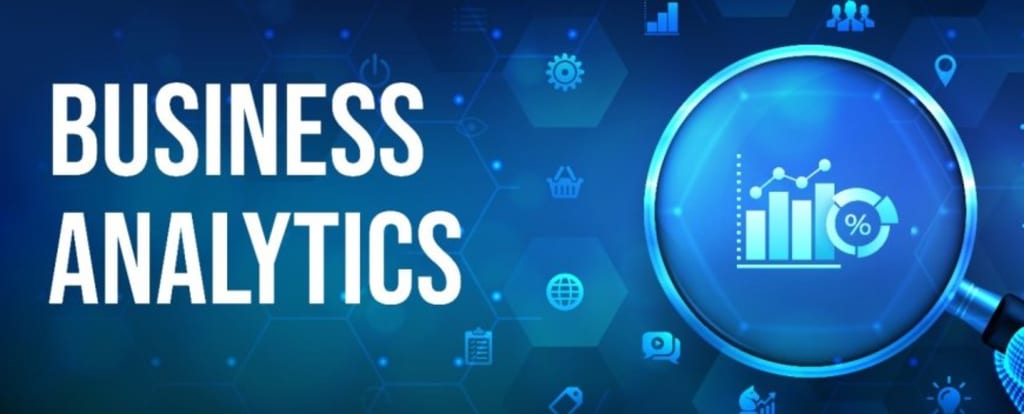Gazing into the Crystal Ball: The Future of Business Analytics in 2024 and Beyond
This blog explains the future of Business Analytics

Business analytics is not only a rapidly evolving field because of new technologies being rolled out all the time, but the avalanche of data available to us is also fuel to keep this fire going. As we hurtle toward the future, let's explore some of the hottest trends and predictions that will define the landscape of business analytics in the years to come:
1. Democratization of Data: Over the years the use of citizen data scientists has continued to grow due to the following reasons Among the major reasons that have led to the increase in the use of citizen data scientists include:
Advanced analytics implementation is no longer the exclusive preserve of select businessmen anymore. Amidst the tornado of today’s advanced self-service and automation, the future holds auspiciously promising “citizen data scientists —business users equipped with capabilities to acquire, process, and analyze data without necessarily involving data scientists. This democratization of data will mean data is propagated throughout an organization with people at all organizational levels being empowered to make data-driven decisions.
2. Generative AI: So as to change themselves and gain knowledge about their capabilities and the circumstances under which they perform efficiently, people need to be supplied with effective knowledge.
Prepare to dive deeper into the subject and observe the emergence of generative AI in business analytics. This can potentially impel the ability to look at massive amounts of data that are not just capable of revealing patterns, but also of creating all new datasets, reports or even content. Consider such scenarios as intelligent solutions that are capable of yielding financial predictions, identifying suitable products, or writing desirable copy within the shortest time using real-time analysis.
3. Hyperautomation: One aspect where the extrapolation is rather more straightforward is a spoof headline that reads ‘The Machines Take Over’ and the subtitle: ‘The Mundane Tasks’.
Repetitive data analysis tasks? Tedious report generation? These will become relics of the past. They are the ones that will serve as remnants of bygone or a period in the past. Hyperautomation promises to enhance the accuracy of data processing and analysis tasks through the integration of diverse technologies such as RPA and machine learning. This relieves another critical strain on human resources since they do not have to invest their time in thinking and solving basic, mundane problems.
4. The Explosion of Edge Analytics: The origin of insights at the speed of business Guiding Principles
Real-time insights are the future of the world as it prepares for a new world of innovation. The localized information processing, also known as edge analytics, meaning that data is processed at the source where it is produced (equipment, gadgets) will remain important. This means that there is a faster and more efficient decision-making process right from the get-go since the company can adapt to changing circumstances based on almost real-time data processing.
5. The Ethical AI Imperative: Power is the capacity to influence decision-making and the direction, motivation, or control of people and resources for achieving organizational goals Power can also refer to the authority which is the right to give orders, make decisions, and enforce obedience Power with responsibility means achieving organizational goals through the appropriate use of authority over subordinates and other organizational members in a manner that is legal, moral, and professional.
This paper sought to find out the potential ethical issues arising from the use of AI in business analytics Since AI is progressing rapidly in its capability in business analytics, ethical concerns will arise to prominence. Corporations will have to guarantee that their handling and employment of data is not only more transparent but also free from bias, and compliant with the principles of data protection that are expected to emerge in the future. This will ensure responsible implementation and utilization of artificial intelligence to ensure that organizations remain competitive while at the same time, they are trusted by their audiences.
The Future is Now: The title of this section is Embrace the Transformation which aims at urging organizations to adopt a new approach when it comes to their performance management systems.
Business analytics is growing gradually and there are many opportunities yet to be explored in the near future. Thus, by accepting these trends and predicting the future, businesses will be able to open a universe of analytical possibilities, improve functioning, and work on developing and making more confident decisions. Just remind ourselves that the future is for those who can handle and manage data in their constantly evolving characteristics – Get ready to ride!
About the Creator
Fizza Jatniwala
Fizza Jatniwala, an MSC-IT postgraduate, serves as a dynamic Digital Marketing Executive at the prestigious Boston Institute of Analytics.
Enjoyed the story? Support the Creator.
Subscribe for free to receive all their stories in your feed. You could also pledge your support or give them a one-off tip, letting them know you appreciate their work.





Comments (1)
A must-read post.